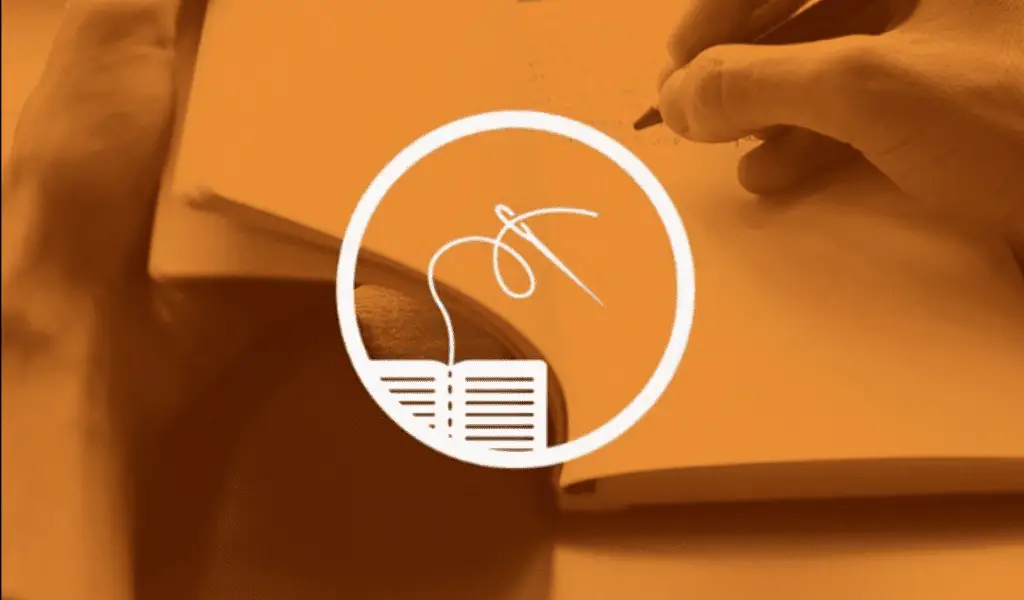
For those outside the world of bookbinding, it’s easy to think that every book is bound the same way, but this simply isn’t true. In general, bookbinding is separated into two categories, traditional and modern bookbinding.
Traditional bookbinding is probably what comes to mind first. It includes sewing, gluing, and hardback binding, and there are several ways to do this. Modern bookbinding on the other hand includes techniques like perfect binding, softcover binding, comb binding, and spiral-bound books.
If you’re looking to enter the bookbinding game, modern Coptic binding is the way to go! This type of binding requires special tools and supplies that are both readily available and open to experimentation.
Keep reading to find out what makes Coptic binding so cool, and more importantly, how to evaluate quality tools and materials, and what you need to make a Coptic bound book.
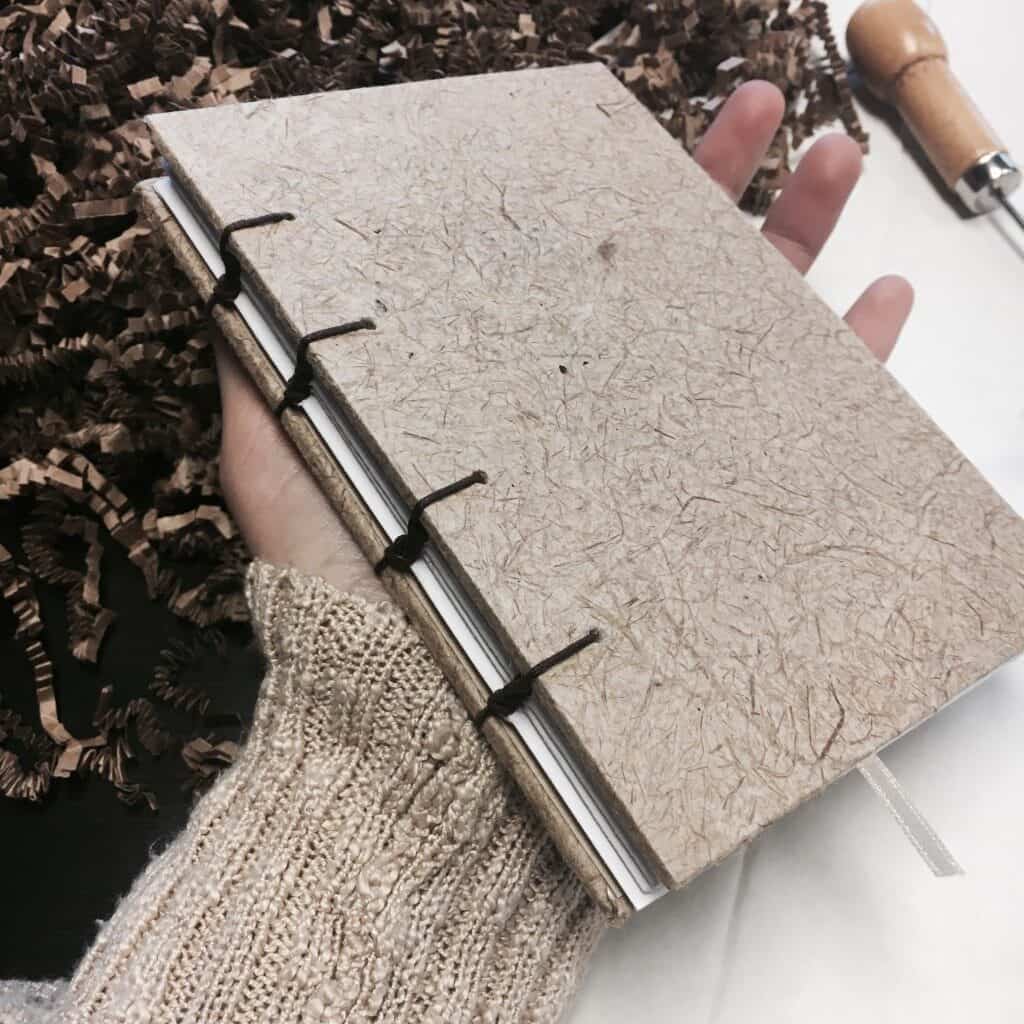
WHAT IS COPTIC BINDING?
Coptic binding is an old form of bookbinding that dates back to ancient Egypt and it involves folding sections of parchment into a pamphlet (signature) and then stitching them together. It has a unique look because the stitches show on the spine, and it’s quite strong – perfect for safeguarding your favorite stories!
What’s the Appeal of Coptic Binding?
We tend to follow traditional methods and our favorite technique is modern Coptic binding (also goes by Coptic stitching or Coptic sewing.) It uses the old process of Coptic binding but doesn’t include covering leather. It’s the same technique that’s used in our Coptic binding DIY.
We love modern Coptic binding for a few reasons:
- Lays Flat: Without any covering leather, Coptic binding allows you to open and flip through your pages at a full 360 degrees without damaging the binding. No more having one cover always trying to shut on you – which can be super annoying when reading. And the best part? It’s perfect for journaling because each page lays as flat as possible.
- Non-Adhesive: When it comes to Coptic binding, you don’t need glue to get the job done – that’s a crafty superpower! Glue is only ever used for things like pretty cover decorations, so it’s not even necessary.
- History: The Nag Hammadi Library is like a time machine, taking us back through the pages of history with its 13 volumes that use the Coptic binding of papyrus. With over 50 documents, it’s an incredible insight into the beginnings of the Christian religion and offers a wealth of knowledge to scholars and historians alike – making it one of antiquity’s most valuable artifacts.
There are certainly many other techniques, and even some that are easier than Coptic binding, such as perfect binding or saddle stitch binding, but Coptic binding has a far more appealing look. And it’s still simple, just requires far more steps than those other two techniques.
Now then, if you’re on board for giving Coptic binding a go, we’re going to show you the tools and supplies you need.
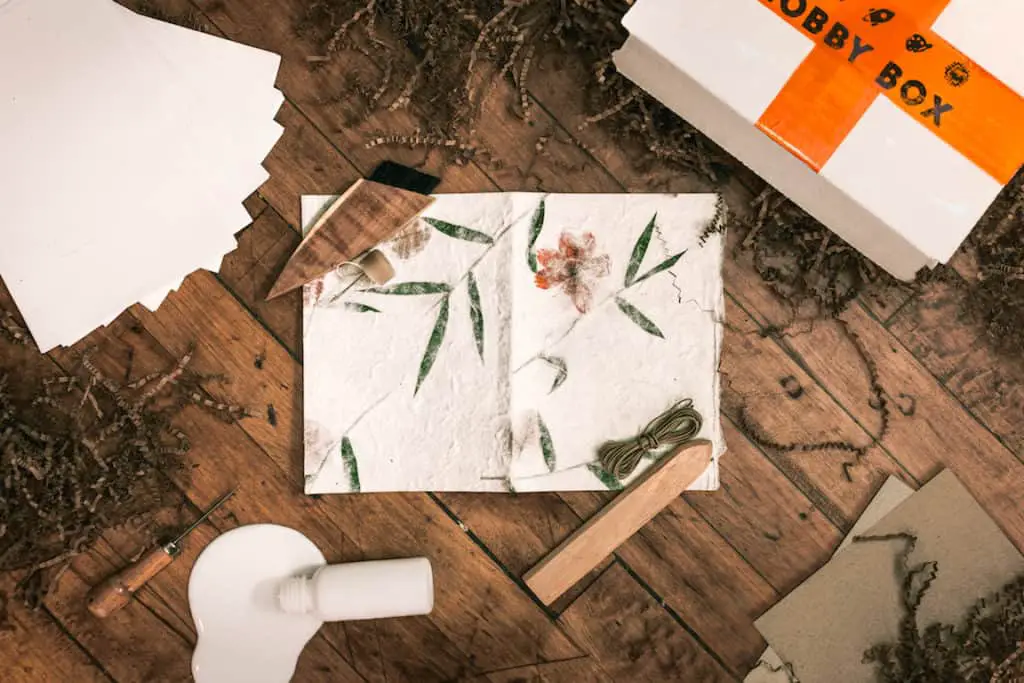
Coptic Bookbinding Tools and Supplies
This section is going to walk you through everything you’ll need to Coptic stitch a book, we’ll make recommendations along the way.
But what we’d like to share is how to evaluate the quality of materials on your own, and that’s because high quality has a tremendous impact on your final product.
So let us teach you what to look for, so you can be armed with the knowledge to separate the good stuff from the cheap stuff out there.
Why Does Quality Matter for Bookbinding Materials?
Quality materials will ensure that your binding job looks professional and lasts longer. Using the highest quality supplies will save time and money in the long run, so it’s important to invest in the right ones!
In general, when looking for quality bookbinding materials, it’s important to find materials that are both durable and reliable. Imagine if the Coptic Christians had just run to their equivalent of Michael’s back in the day – we wouldn’t have the Nag Hammadi Library if that were the case.
The goal of bookbinding is to create a work of art with archival quality that lasts 70 to 100 years without degrading with age. This is only achieved by using the best materials around.
Not to mention using the cheap stuff will make the process of binding lengthy and frustrating.
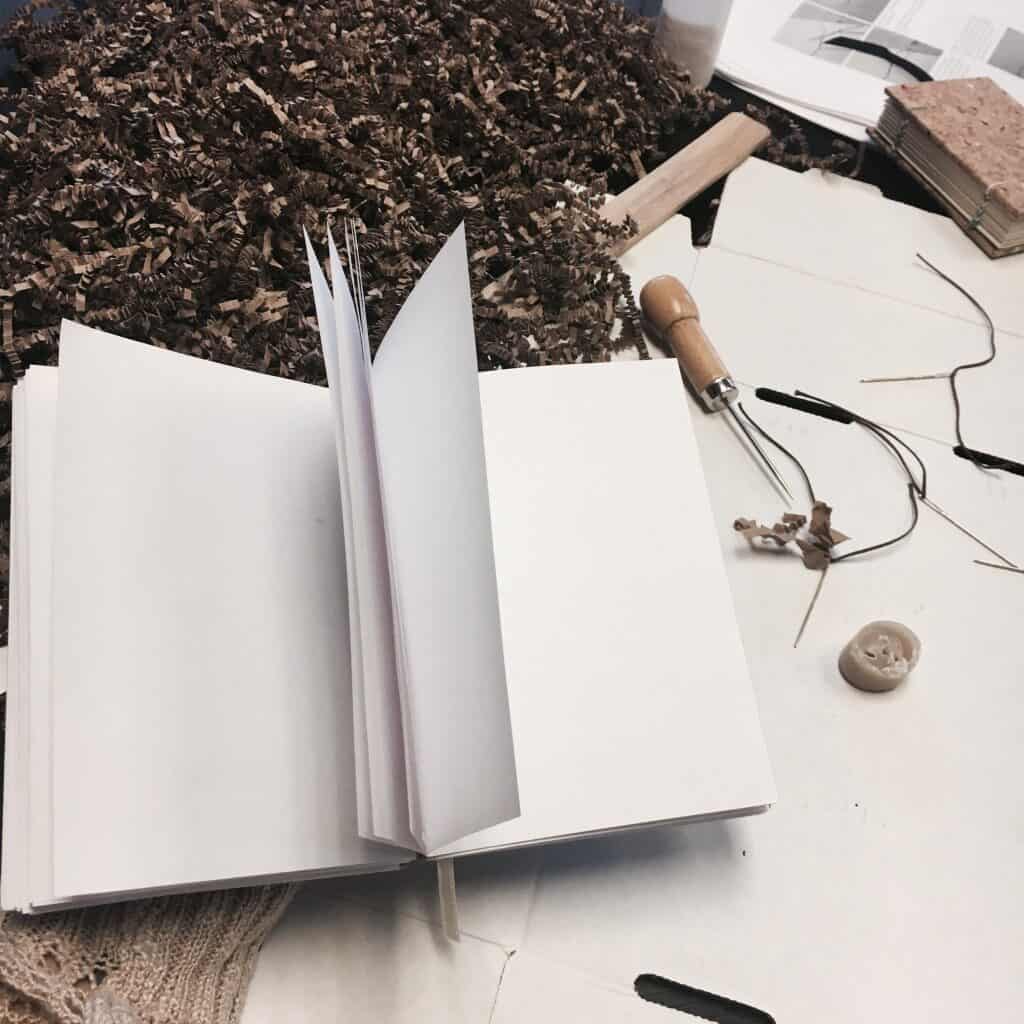
How Long Does It Take to Bind a Book?
Time varies from 5 minutes to 5 days depending on the type of bookbinding you decide to do. As it relates to Coptic stitch binding, it can take between 30 minutes and two hours to bind a book. This can also change based on experience and the number of signatures in the book.
Now then, let’s first look at the tools, then shift gears and look at the supplies. Although a bit nuanced, we’ll separate the two because tools help us do our job more effectively while supplies execute the task itself.
Bookbinding Tools for Coptic Binding
Tools are items that allow us to do the work of bookbinding better and easier. Each item listed below is built to last far longer than one project, and while some may need repair over time, if you purchase the right quality tools, it should last you a lifetime and improve the quality of your project.
What Tools Do I need to Bind a Book?
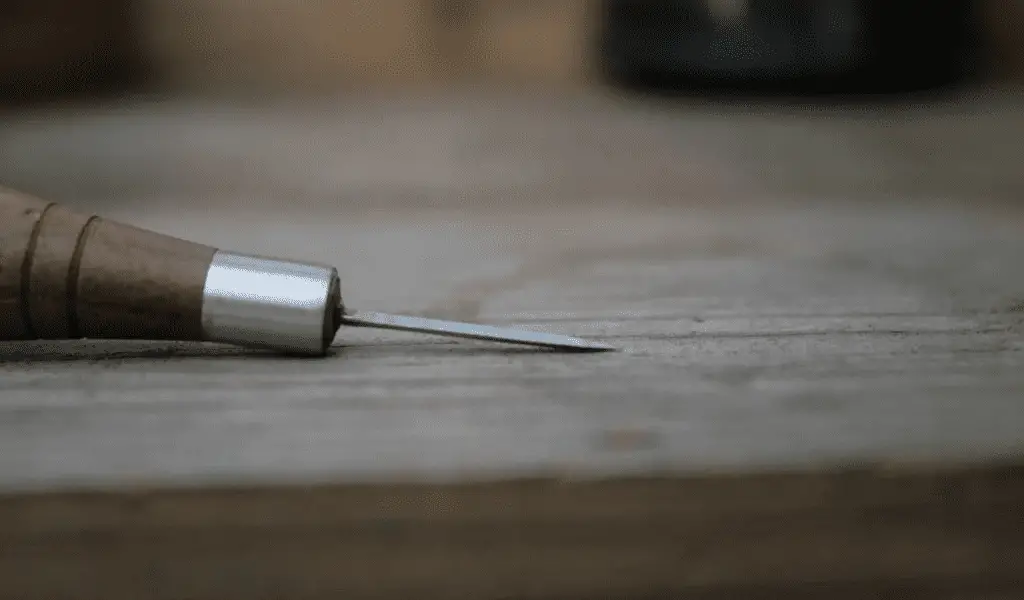
Piercing Awl – Malco A3 Hand Scratch Awl (3/8″)
An awl is a handle tool with a metal point on one end and typically a gourd-shaped wooden handle on the other that pierces small holes into the spine of the book. It’s used to mark where the thread or binding material will go, so it creates a neat guide for you to follow when stitching.
What Makes a Good Awl?
- Shape: You need the awl to pierce through the book board, to do this well, it needs to be sharp and thin to create just enough opening for threading. A wide and dull point will only cause you problems.
- Texture: Poor quality awls will have jagged sides that will catch onto whatever your piercing is, making it nearly unworkable.
- Material: You need an awl blade that holds its sharp point, so opt for steel. Inferior metals to avoid include low-grade alloys. You can beef up the point by looking for ones with diamond tips or some coating that makes the tip harder and stay sharper for longer.
- Ergonomics: Make sure the handle is comfortable in your hand and doesn’t slip easily when you’re making your stitches.
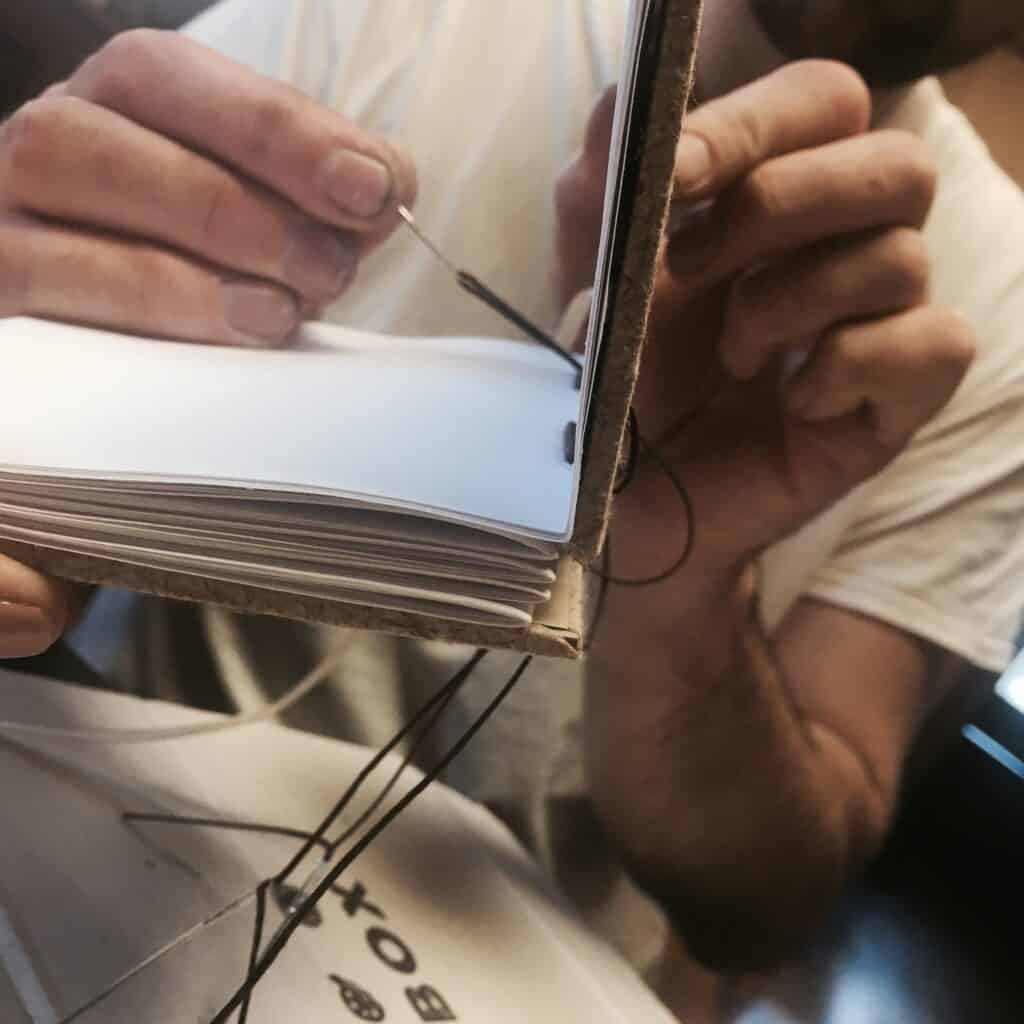
Bookbinding Needles – Dritz Milliners Hand Needles 3/9 Gauge
A bookbinding needle is used for several hand-sewing techniques which of course includes Coptic binding, but also link stitch binding, and oversewing. The needle is essential for stitching the spine of the book together. It can also be used for attaching elements like endpapers or bookmarks.
What Makes a Good Bookbinding Needle?
- Shape: This isn’t like sewing a doily, so you need a super sharp needle that has a longer shaft. This will make sure you can pierce through multiple thicknesses of paper, cardstock, or anything else. We use 3/9 milliners’ hand needles to get the job done.
- Needle Point: To tell the difference between a quality vs poor quality needle, look for one that has a strong and consistent point with no signs of wear or tear. Additionally, the tip should be evenly polished to ensure smooth stitches when binding your book.
- Material: Stainless steel will be your best option.
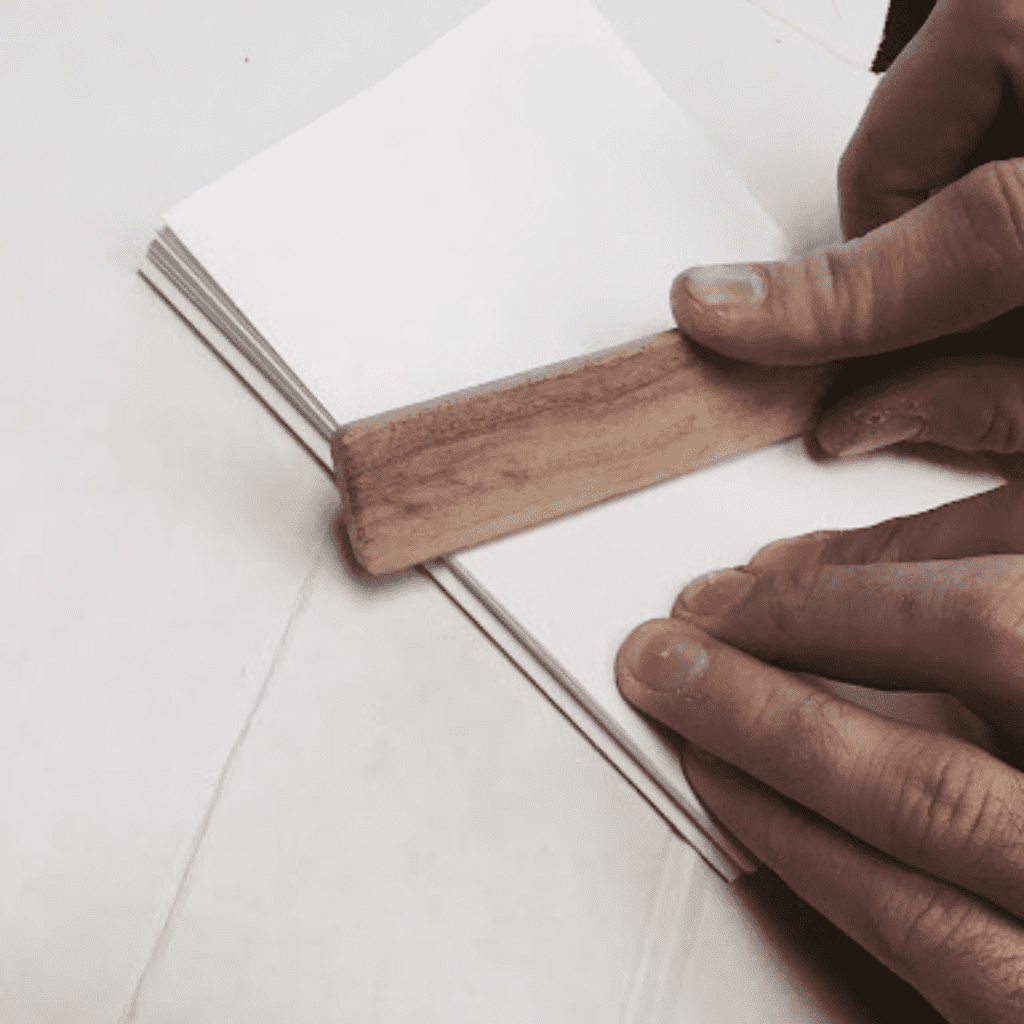
Bone Folder – Fiskars Acrylic Bone Folder
Aside from having the coolest name, a bone folder is a tool used in bookbinding that has a rounded edge and is most often made from plastic or wood (bamboo pictured above) today, but also cattle bones are used as well. Back in the day, it was either made from bone or ivory exclusively, hence, the name.
It’s mainly used for scoring paper to create a neat fold and crease, but it can also be used to smooth out wrinkles after gluing. It’s useful for creating clean edges on the spine of a book when gluing it together, making sure your signatures are nice and crisp or creating flaps that will later be glued down.
What Makes a Good Bone Folder?
- Shape and Texture: A good quality bone folder should have a smooth surface and rounded edge that won’t damage the material you’re working with. Low-quality bone folders may have rough or jagged edges – so watch out, this is a quick way to ruin your hard work.
- Ergonomic: Additionally, look for one with an ergonomic handle that will feel comfortable to hold and maneuver when using it.
Don’t Overspend on Bone Folders
This might be a bit unpopular in the bookbinding community, but it’s okay to use a cheap acrylic bone folder instead of some $100 ancient pearl material. So long as the bone folder is smooth with rounded edges and feels good in your hands, then it will get the job done.
This is the reason we’re going to link to two affordable options as the recommended bone folders – don’t splurge on this component, your money is better spent elsewhere with bookbinding supplies and tools.
Even something like a smooth letter opener could work well in a pinch.
Framing Square, T-Square, or Ruler
You’re going to need a straight edge throughout your bookbinding project to help measure and mark paper, create straight lines, and even score the spine of books. We all have some sort of ruler lying around the house, and some can do the trick, but let us show you what your high-quality options look like.
While we preach the praises of steel and stainless steel in the recommendations below, aluminum is also an option for any of these straight-edge materials. It’s certainly better than any sort of plastic material, but it takes on marks, stains, and gashes easier than its steel counterparts.
The following are ranked in order of preference – the first being our highest recommendation.
1. Framing Square – Starrett Professional Framing Square:
As a former carpenter, it’s hard to escape the power of a framing square. What you’ll appreciate most about a framing square for bookbinding, is its size. Because they’re rarely shorter than 24″ on the long end, you can easily go over the edge of your bookbinding materials, this helps keep your material in place as you cut along it.
Also, it has built-in rulers and a handy 90-degree angle which is a must in bookbinding. Be sure to get a framing square made of steel, it will keep the perfect edges intact for longer.
2. T-Square – Alvin Stainless Steel T-Square:
Our next favorite is going to be a compromise between a framing square and a ruler, which is the T-square. It will help you pull along level edges to create right angles for forming straight lines, plus it includes a ruler on all edges to help with measuring along the way. Again, with this, make sure you go with a hard metal for the base material.
3. Ruler – Breman 24-Inch Stainless Steel:
If you decide to go with a ruler, do yourself a favor and get one that’s 24 inches. This will make it way easier to take on bookbinding projects where the book has some heft to it.
In addition to steel, be sure to get a cork-backed ruler. You won’t have the luxury of keeping your materials in place like a framing square or T-square here, so you need something to help keep your ruler in place without slipping, which is the purpose of cork.
Razor: X-Acto Compression Knife Set
If you’re into any sort of crafts, skills, or hobbies, you probably own an X-Acto knife, and for good reason. These little blades are top-notch for cutting paper, fabric, and so many other materials with precision.
There are many options out there for razor blades that you can use for bookbinding, but we love X-Acto knives because you can find them anywhere, they are consistently sharp, easy to hold, and easy to replace dull blades with new ones.
And the kit we’ve dropped into this section has everything you’ll need. You can even use this X-Acto knife set for quite a few of the tutorials on New Hobby Box, like how to scrimshaw, or how to carve your own stamps.
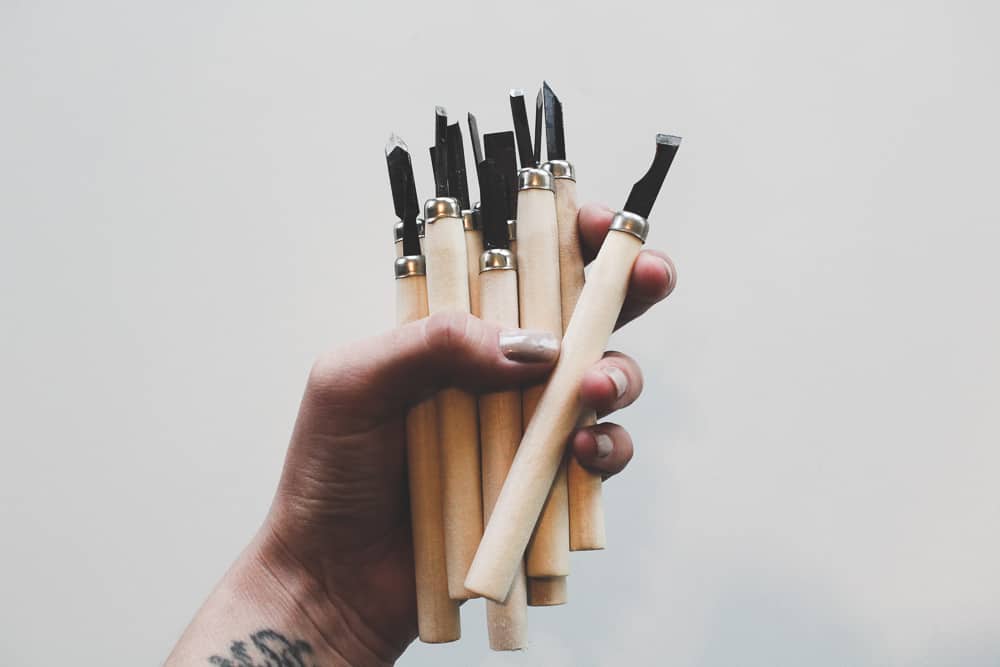
Alternatives to X-Acto Blades
If you want to go outside of an X-Acto knife, look for anything that has a blade with a long, thin profile that allows you to make clean, precise cuts without damaging the material you’re working with. And try to get a scribe that’s on the thinner side, this will give you more freedom to make cuts where you intend.
If you decide to go a different route, such as utility knives, just be aware that the handle of most utility knives isn’t conducive to precision cutting. This means you’ll need to rely heavily on any straight edge to guide your utility blade.
Those are all the core tools you’ll need for bookbinding – let’s have a look at the supplies.
Bookbinding Supplies for Coptic Binding
Supplies are the raw materials that are used up in the process of binding a book – things like glue, paper, cloth, etc. While you’ll run through these during each project and ultimately need to replace them, you should still opt for high-quality materials and supplies because they impact the overall quality of your book.
What Kind of Materials Do I Need to Bind a Book
If you’re planning on doing Coptic stitch binding, here’s a list of all the materials you’ll need:
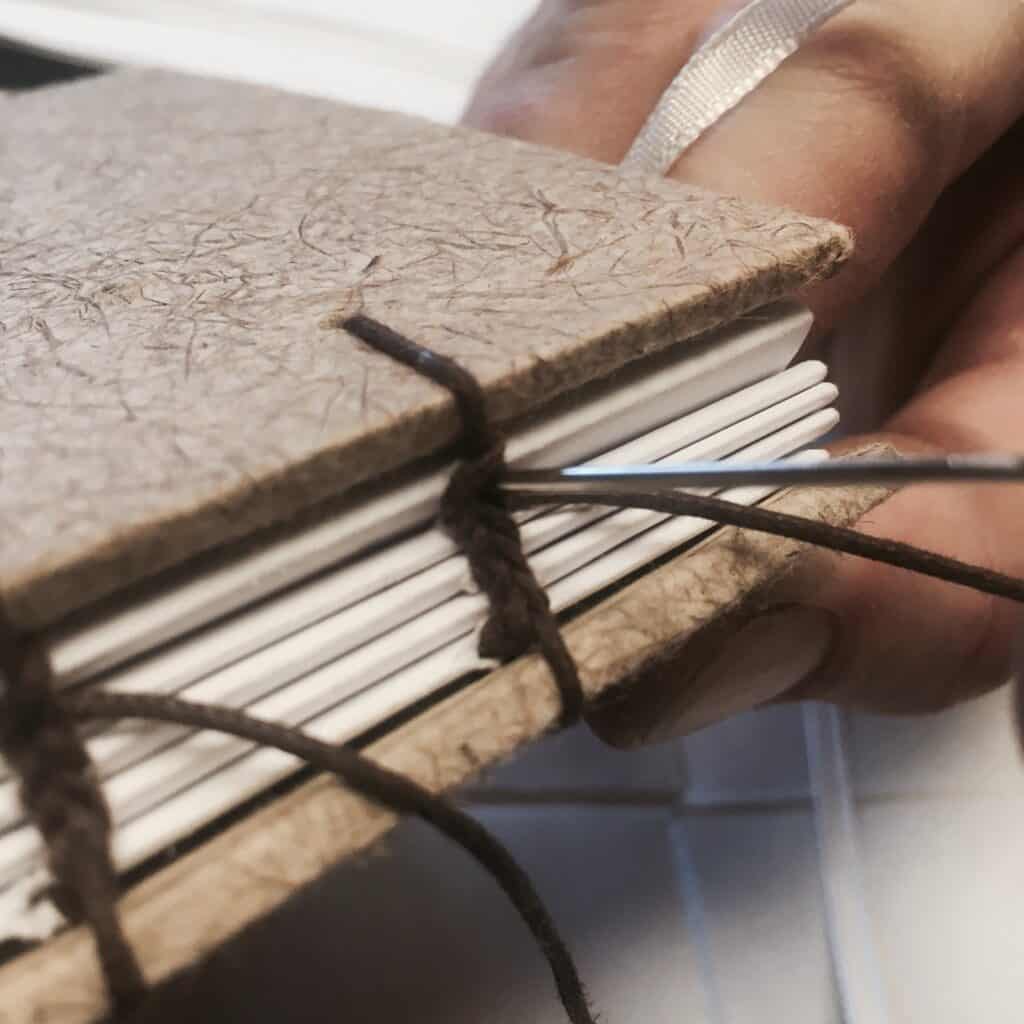
Thread – Books by Hand Linen Thread
Thread is used to bind the spine of the book together using hand-sewing techniques. A good quality thread should be strong and durable, with a wax finish that helps prevent it from fraying or knotting during stitching.
You can either buy pre-waxed threads or wax them yourself. We recommend the latter. The thread linked above is unwaxed and balances strength and softness perfectly for binding. If you want to purchase beeswax, go with Lineco 1oz Beeswax.
What Makes a Good Bookbinding Thread?
- Strength: To tell a good quality thread apart from a poor one, inspect the thread for any signs of imperfections such as breakage, fraying, or weak spots. Additionally, check for evenness in thickness along the thread.
- Thickness: You can use a range of thicknesses, but 35/3 gauge is ideal for Coptic binding, at least related to the format of the New Hobby Box Coptic Binding Tutorial.
How Can I Ensure a Secure Binding?
To ensure a secure binding, reinforce the binding with thread by sewing through the text block from one side to the other.
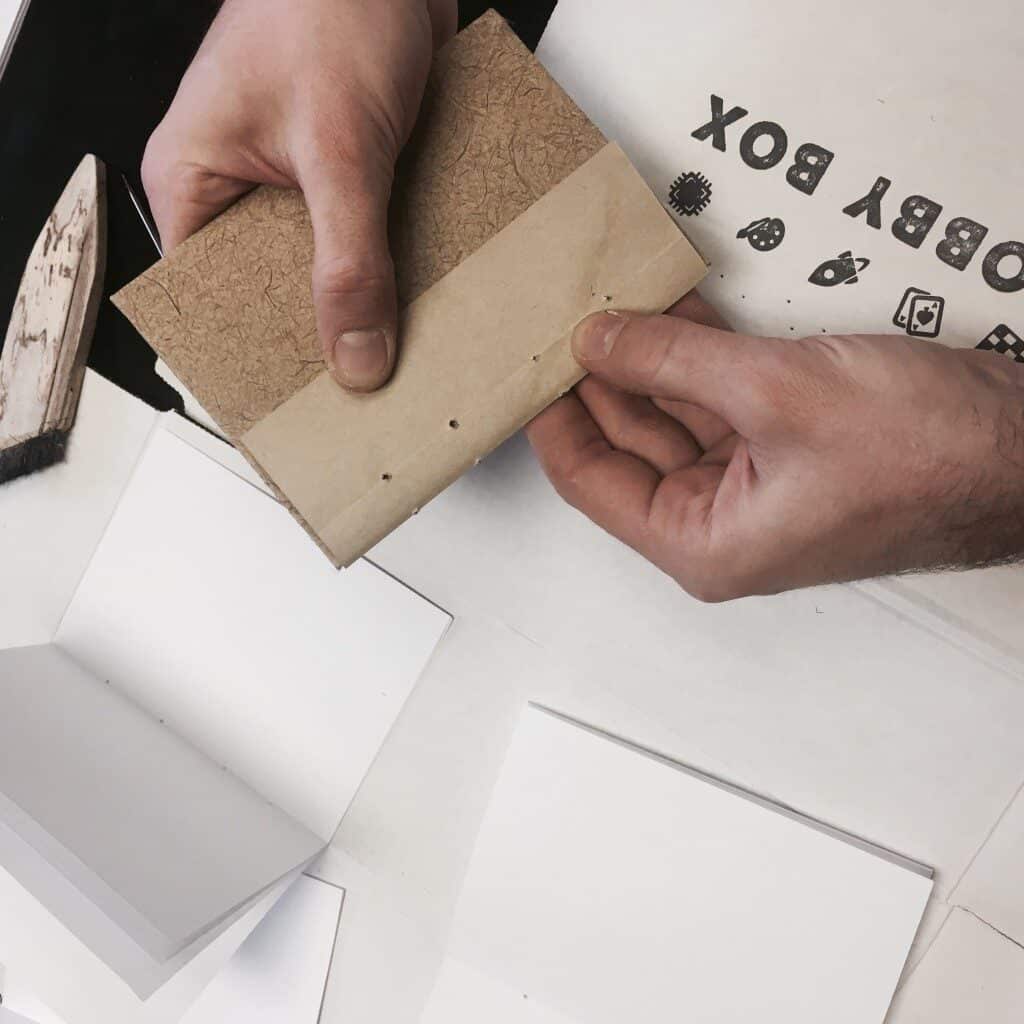
Book Board – My Handbound Books 8″x11″ Book Board
Book board goes by a few names, including binder board, and there are all sorts of materials you can use here. A book board is a type of thick cardboard typically used in bookbinding as the backing material for binding books.
In other words, it’s the thick board that creates the covers of your book, which is one of the reasons it’s also referred to as a cover board.
Getting the right book board is important because if you get one that’s too weak, your covers will warp. If you get one that’s too strong, it will throw out your stitching.
What Makes a Good Book Board?
- Thickness: Thickness is going to determine the sturdiness of your covers. This should change with the size of your book, but in general, 90-point thickness is a very versatile size for different-size projects. Look for a board that has a uniform thickness across each sheet, is strong enough to hold up against wear and tear, and is lightweight enough so it doesn’t add too much bulk to the book. Density is one of the ways to control weight and strength.
Buy Your Book Board on Etsy, Not Amazon
Believe it or not, we don’t use Amazon for any of our book board supplies. We find that the quality and thickness lacking – Etsy is a far better solution. Most binder board material on Amazon will be 80 pt. thickness, which is going to lead to warping for any book that’s above 6 inches in length.
On Etsy, you can find a larger variety of thicknesses, which is why we are linking it here as well. This specific example is 90 pt. thickness, which will be great for a book around 10 inches in length, keeping it strong and preventing warping with time.
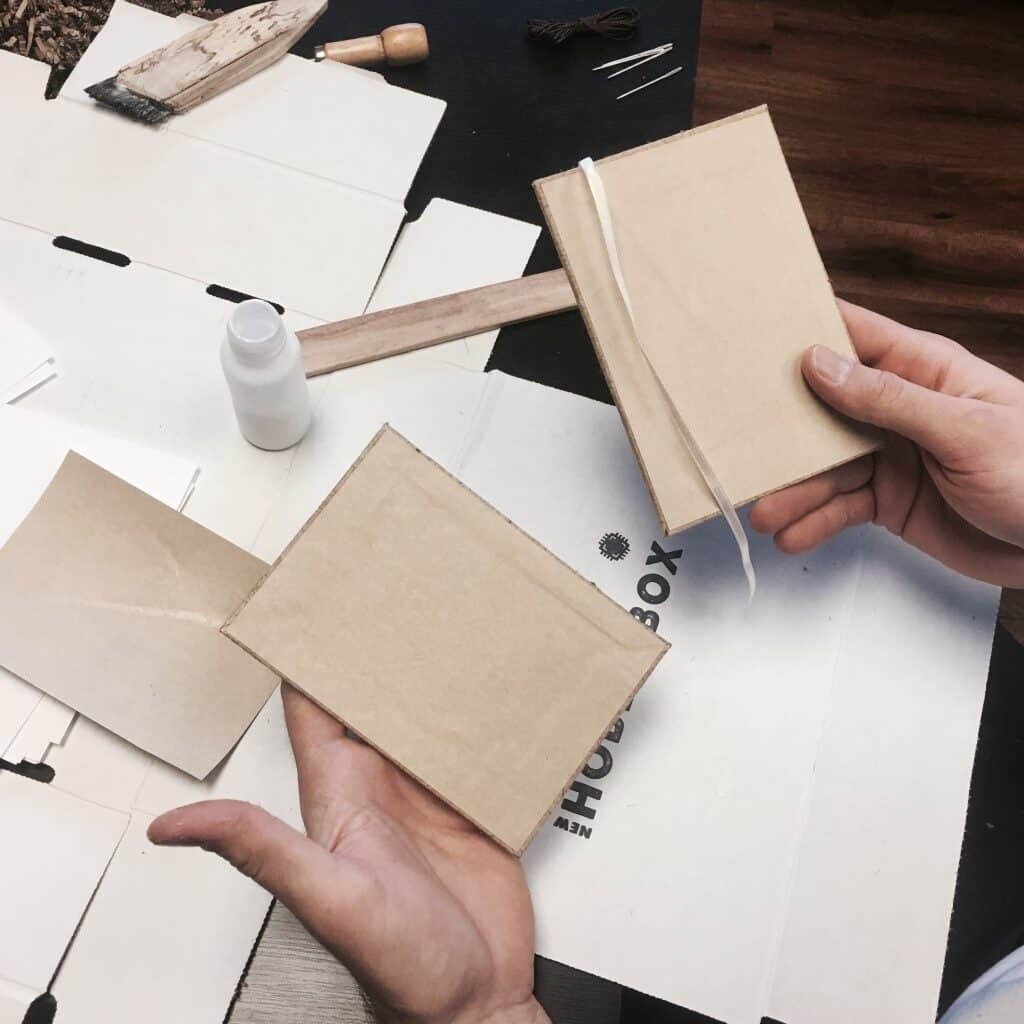
Cardstock – Ohuhu Blank Cardstock 80lb
You can of course make your own to sub in for cardstock, and we’ve got a tutorial to show you how to make paper, but if you want to go the store route, be sure to get premium cardstock.
Cardstock is a type of paper that is much heavier and thicker than regular printer paper. It’s often used in bookbinding as the material for endpapers, headbands, and other decorative elements.
What Makes a Good Cardstock?
- Thickness: If you’re making a book with endpapers, it’s best to use cardstock that is 80lb or more in thickness. If it feels like printer paper, try again. This will make sure your paper is thick enough and won’t tear easily.
- Consistency: Texture matters too! You want a cardstock that’s smooth and not too rough or bumpy – that can make it difficult to fold. Also, a smooth finish will help if you plan on printing something on the cardstock. Now, if you decide to make the paper yourself, you’ll inevitably end up with rough patches, which is fine. Try your best to keep the surface as level as possible during the process. If you’re buying from a store, inconsistency isn’t a good sign of quality.
- Color: The color of the cardstock can add an extra bit of pizzazz to your book, but also indicates quality. You want cardstock with color that is even and true across all its sheets.
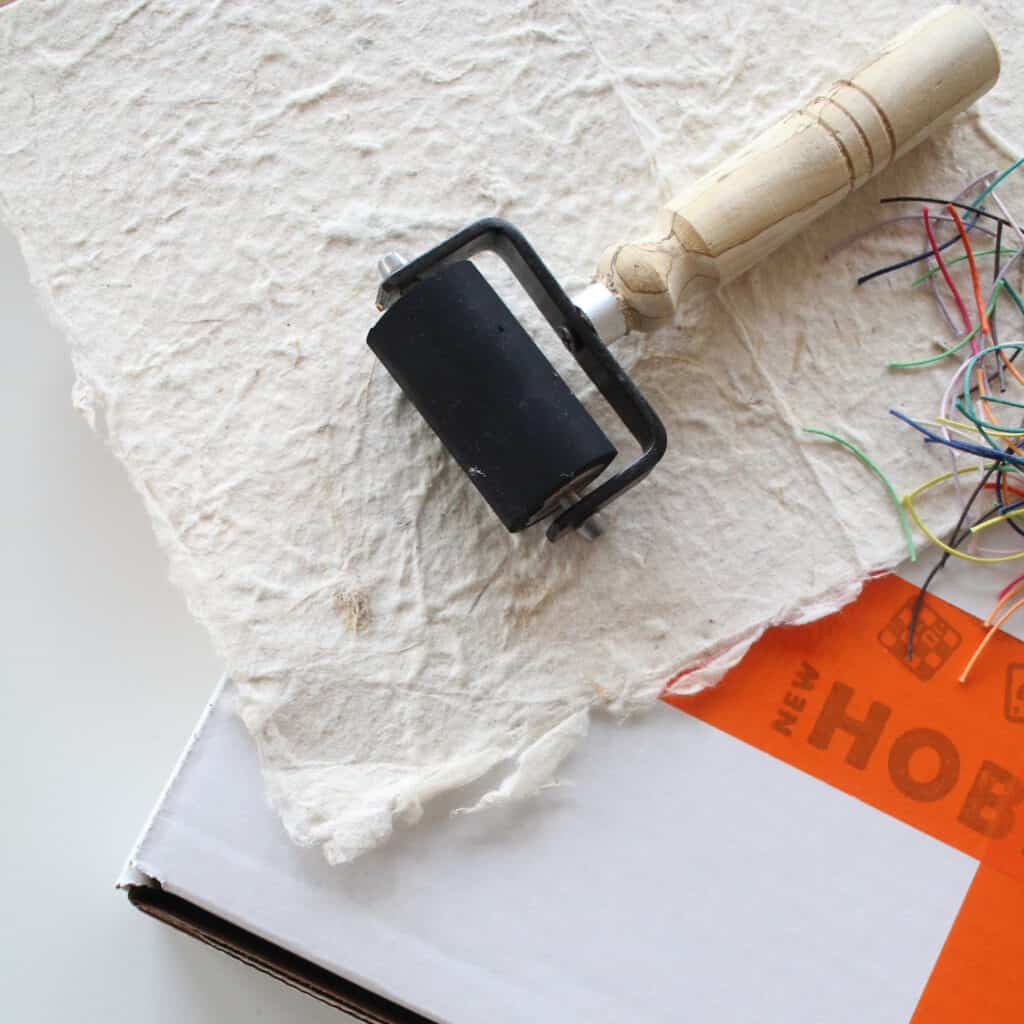
Rag Paper – All Things Cotton Paper Handmade Rag Paper
When you think of paper, you’re most likely imagining wood pulp paper. Rag paper isn’t that at all.
It’s archival quality and acid-free. And instead of being made from wood pulp, it’s made with 100% cotton fibers. It has a semi-smooth finish, high durability, and is resistant to fading and yellowing over time.
This makes it ideal for bookbinding – years later, your pages will look like you just made them. Aside from color though, rag paper is generally a stronger woven fiber, meaning it’s more durable than wood pulp paper. This will also help preserve your book longer.
Rag paper also has a unique visual texture, thanks to its construction from natural fibers. This is a nice touch to showing your book was made by hand. And of course, you can skip the store and make this paper yourself.
Some rag paper is better than others, here’s what you need to know to decipher the good from the bad.
How Can You Tell Premium-Quality Rag Paper?
- Thickness: Feel the paper and make sure it is substantial and sturdy.
- Texture: Check for a smooth, even surface with no bumps or lumps. If these are handmade papers, there will be inconsistencies. Instead, what you want to look for are larger areas where the thickness is stark or lumps appear sporadically.
- Color: Inspect the color of the paper and make sure it is vibrant and vivid and evenly spread across each page.
- Bleaching: Determine if the paper is acid-free and made with 100% cotton fibers.
Does it Matter What Kind of Paper I Use?
It matters what kind of paper you use when binding a book because the quality and weight of the paper will affect the overall durability of the binding. High-quality, acid-free paper ensures that your book won’t degrade over time, while heavier cover paper provides extra security without making it too difficult to open and close the book.
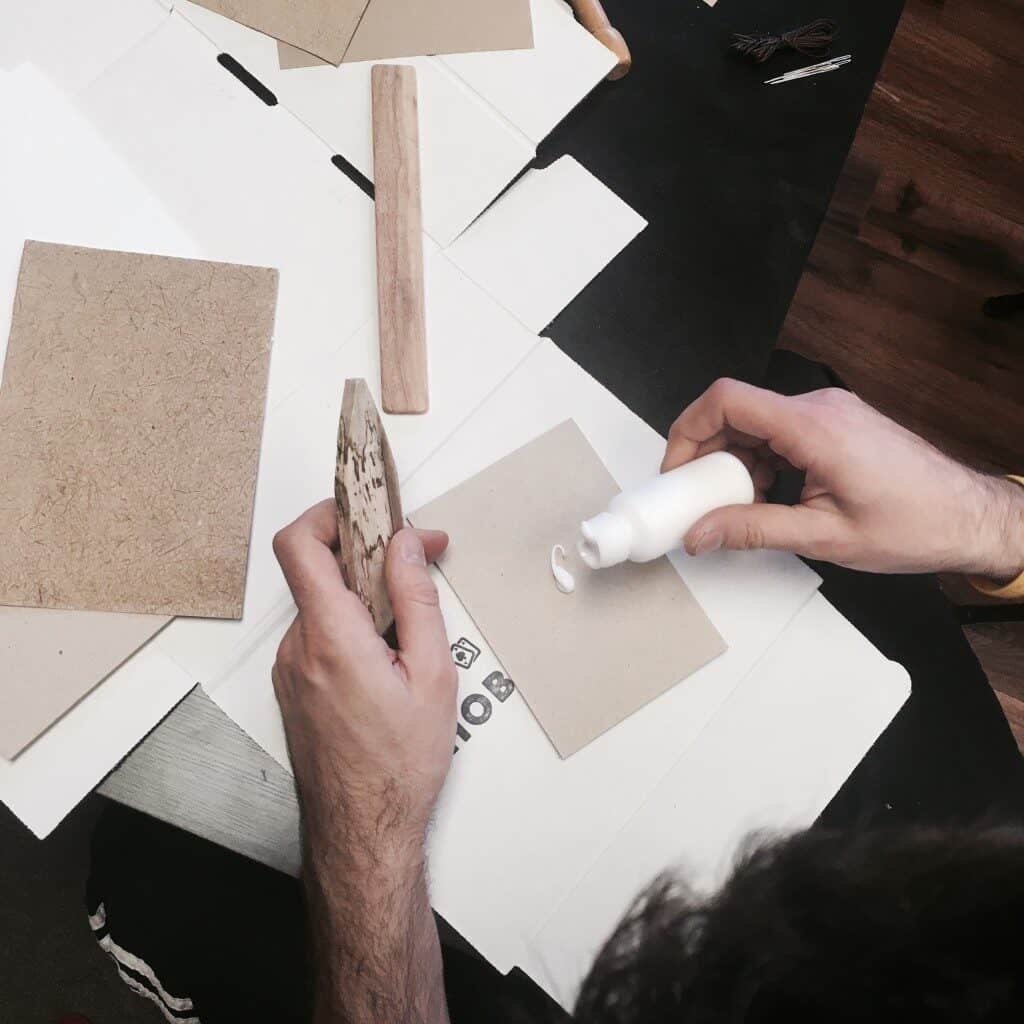
Bookbinding Glue – Books by Hand PVA Glue
This can change with the type of bookbinding project you’re taking on, but PVA glue is hands down the best option for how it’s used in our Coptic binding tutorial. PVA is strong and versatile, which helps keep its bonding agents intact longer. We have a lot to say on this topic – which is why we’ve created an entire guide to PVA glue and some alternatives. But the biggest takeaway is that PVA glue is hands down the best option for nearly any bookbinding project.
Some other glues will start to degrade, which can deteriorate your book. In the Coptic binding tutorial, PVA is simply used to adhere the cover and endpaper to the book board, so it’s semi-decorative, but in other forms of binding, glue plays an important structural role.
PVA also dries clear and leaves no residue, which makes it ideal for clean bookbinding projects. And finally, PVA glue has a high tackiness which helps to create a secure bond between the pages and cover of a book.
What Type of Adhesive Should I Use?
For binding a book, it’s best to use a specific type of bookbinding PVA glue. Look for an archival-quality adhesive that is acid-free and will not damage your paper over time. Premium PVA will have a consistent and uniform texture and tackiness. Make sure it’s solvent-free and water-soluble.
That’s the Premium Way to Bind a Book
And there you have it, the New Hobby Box guide to buying the best tools and supplies for bookbinding. When looking for bookbinding tools, go with quality that’s built to last instead of cheap alternatives.
For bookbinding supplies, look for material consistency. Find the right color cardstock, choose an archival-quality adhesive, and use rag paper to add a touch of texture and longevity to your project.
With these supplies in hand, you have everything you need to make premium quality books that will last for years.
